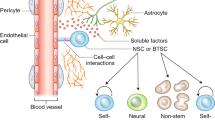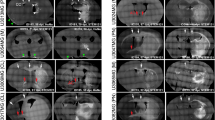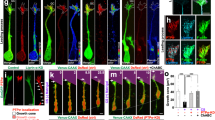Abstract
Glioma-cell migration is usually assessed in dissociated cell cultures, spheroid cultures, acute brain slices and intracranial implantation models. However, the interactions between migrating glioma cells and neuronal tracts remain poorly understood. We describe here a protocol for the coculture of glioma cells with myelinated axons in vitro. Unlike other methods, this protocol allows the creation of in vitro conditions that largely mimic the complex in vivo environment. First, long retinal axons from embryonic chicken are formed in an organotypic culture. Glioma cells are then positioned in the vicinity of the explants to allow them to contact the axons, interact with them and eventually migrate along them. High-resolution video microscopy and confocal microscopy can be used to monitor the migratory behavior. This protocol, which takes about 5 days to complete, could be applied to different types of tumor cells that interact with neurites, and is suitable for pharmacological and genetic approaches aimed at elucidating mechanisms underlying tumor migration.
This is a preview of subscription content, access via your institution
Access options
Subscribe to this journal
Receive 12 print issues and online access
$259.00 per year
only $21.58 per issue
Buy this article
- Purchase on Springer Link
- Instant access to full article PDF
Prices may be subject to local taxes which are calculated during checkout




Similar content being viewed by others
References
Ohgaki, H. & Kleihues, P. Genetic pathways to primary and secondary glioblastoma. Am. J. Pathol. 170, 1445–1453 (2007).
Stupp, R. et al. Radiotherapy plus concomitant and adjuvant temozolomide for glioblastoma. N. Engl. J. Med. 352, 987–996 (2005).
Giese, A., Bjerkvig, R., Berens, M.E. & Westphal, M. Cost of migration: invasion of malignant gliomas and implications for treatment. J. Clin. Oncol. 21, 1624–1636 (2003).
Boyden, S. The chemotactic effect of mixtures of antibody and antigen on polymorphonuclear leucocytes. J. Exp. Med. 115, 453–466 (1962).
Schichor, C. et al. The brain slice chamber, a novel variation of the Boyden Chamber Assay, allows time-dependent quantification of glioma invasion into mammalian brain in vitro . J. Neurooncol. 73, 9–18 (2005).
Valster, A. et al. Cell migration and invasion assays. Methods 37, 208–215 (2005).
Demuth, T. & Berens, M.E. Molecular mechanisms of glioma cell migration and invasion. J. Neurooncol. 70, 217–228 (2004).
Auer, R.N., Del Maestro, R.F. & Anderson, R. A simple and reproducible experimental in vivo glioma model. Can. J. Neurol. Sci. 8, 325–331 (1981).
Cretu, A., Fotos, J.S., Little, B.W. & Galileo, D.S. Human and rat glioma growth, invasion, and vascularization in a novel chick embryo brain tumor model. Clin. Exp. Metastasis 22, 225–236 (2005).
Claes, A., Idema, A.J. & Wesseling, P. Diffuse glioma growth: a guerilla war. Acta Neuropathol. 114, 443–458 (2007).
Laerum, O.D. et al. Invasiveness in vitro and biological markers in human primary glioblastomas. J. Neurooncol. 54, 1–8 (2001).
Giese, A. et al. Migration of human glioma cells on myelin. Neurosurgery 38, 755–764 (1996).
Tatenhorst, L., Puttmann, S., Senner, V. & Paulus, W. Genes associated with fast glioma cell migration in vitro and in vivo . Brain Pathol. 15, 46–54 (2005).
Mariani, L. et al. Death-associated protein 3 (Dap-3) is overexpressed in invasive glioblastoma cells in vivo and in glioma cell lines with induced motility phenotype in vitro. Clin. Cancer Res. 7, 2480–2489 (2001).
Nakada, M. et al. Molecular targets of glioma invasion. Cell Mol. Life Sci. 64, 458–478 (2007).
Nakazawa, T., Tachi, S., Aikawa, E. & Ihnuma, M. Formation of the myelinated nerve fiber layer in the chicken retina. Glia 8, 114–121 (1993).
Ono, K., Tsumori, T., Kishi, T., Yokota, S. & Yasui, Y. Developmental appearance of oligodendrocytes in the embryonic chick retina. J. Comp. Neurol. 398, 309–322 (1998).
Mey, J. & Thanos, S. Ontogenetic changes in the regenerative ability of chick retinal ganglion cells as revealed by organ explants. Cell Tissue Res. 264, 347–355 (1991).
Oellers, P., Schröer, U., Senner, V., Paulus, W. & Thanos, S. Rocks are expressed in brain tumors and are required for glioma cell migration on myelinated axons. Glia 57, 499–509 (2008).
Watkins, T.A., Emery, B., Malinyawe, S. & Barres, B.A. Distinct stages of myelination regulated by gamma-secretase and astrocytes in a rapidly myelinating coculture system. Neuron 60, 555–569 (2008).
Gage, F.H. Neurogenesis in the adult brain. J. Neurosci. 22, 612–613 (2002).
Karimi-Abdolrezaee, S., Eftekharpour, E., Wang, J., Morshead, C.M. & Fehlings, M.G. Delayed transplantation of adult neural precursor cells promotes remyelination and functional neurological recovery after spinal cord injury. J. Neurosci. 26, 3377–3389 (2006).
Meyer, J.S., Katz, M.L. & Kirk, M.D. Stem cells for retinal degenerative disorders. Ann. N Y Acad. Sci. 1049, 135–145 (2005).
Charalambous, P., Hurst, L. & Thanos, S. Engrafted chicken neural tube-derived stem cells support the innate propensity for axonal regeneration within the rat optic nerve. Invest. Ophthalmol. Vis. Sci. 49, 3513–3524 (2008).
Lee, J.E., Liang, K.J., Fariss, R.N. & Wong, W.T. Ex vivo dynamic imaging of retinal microglia using time-lapse confocal microscopy. Invest. Ophthalmol. Vis. Sci. 49, 4169–4176 (2008).
Acknowledgements
We thank Mechthild Langkamp-Flock and Mechthild Wissing for technical assistance, and English Science Editing for editing the manuscript. The work was supported by the DFG (Grant Th 386/14-1 to S.T.), by Innovative Medical Research (IMF) Münster (Grant OE 62 08 02 to P.O.) and Wilhelm-Sander-Foundation (Grant 2005.058.2 to W.P. and V.S.).
Author information
Authors and Affiliations
Corresponding author
Supplementary information
Supplementary Video 1
Migration of C6 cells on chick retinal axons in culture. After axons have grown in vitro, C6 cells are added to the vicinity of axons and contact the axons. It is evident that several cells either move in different directions along the axons or cross the axons. The experiments have been approved by the local authorities and the University of Münster (file reference 9.93.2.10.36.07.095) (MOV 483 kb)
Rights and permissions
About this article
Cite this article
Oellers, P., Schallenberg, M., Stupp, T. et al. A coculture assay to visualize and monitor interactions between migrating glioma cells and nerve fibers. Nat Protoc 4, 923–927 (2009). https://doi.org/10.1038/nprot.2009.62
Published:
Issue Date:
DOI: https://doi.org/10.1038/nprot.2009.62
This article is cited by
-
Differential expressions of the lysyl oxidase family and matrix metalloproteinases-1, 2, 3 in posterior cruciate ligament fibroblasts after being co-cultured with synovial cells
International Orthopaedics (2015)
-
Opposing Signaling of ROCK1 and ROCK2 Determines the Switching of Substrate Specificity and the Mode of Migration of Glioblastoma Cells
Molecular Neurobiology (2014)
Comments
By submitting a comment you agree to abide by our Terms and Community Guidelines. If you find something abusive or that does not comply with our terms or guidelines please flag it as inappropriate.



